Search and Rescue Specialties
Members of Campbell River Search and Rescue receive training in a wide variety of disciplines, making us among the most capable and versatile SAR teams in the province.

Ground SAR
All CRSAR members are trained and certified in ground search operations. The Ground Search Team consists of about 40 members broken down into Search Managers, Ground Search Team Leaders (GSTLs) and ground searchers.
Before any new members can participate in a search or rescue, they must be trained and certified. New members are put through a ground search and rescue course that covers basic search techniques, different types of searches, basic rope rescue, navigation by compass, map reading, GPS, overnight survival, helicopter safety, etc. This course is taught by CRSAR members and consists of approximately 80 hours.
Searches are conducted at any time of the year, at any time of the day, in any type of terrain. They require dedicated SAR members who are willing to leave the comfort of their home and family to look for a complete stranger, regardless of the weather. Many searches are completed in a few hours; occasionally, they take several days. As volunteers, SAR members in BC are not paid for the time they contribute.
All members participate in ground SAR activities. Locating, Accessing, Stabilizing and Transporting are the key goals of ground SAR. We locate through specialized ground search techniques, access with ropes and other specialized equipment, stabilize with first aid techniques and transport by a variety of methods and vehicles.
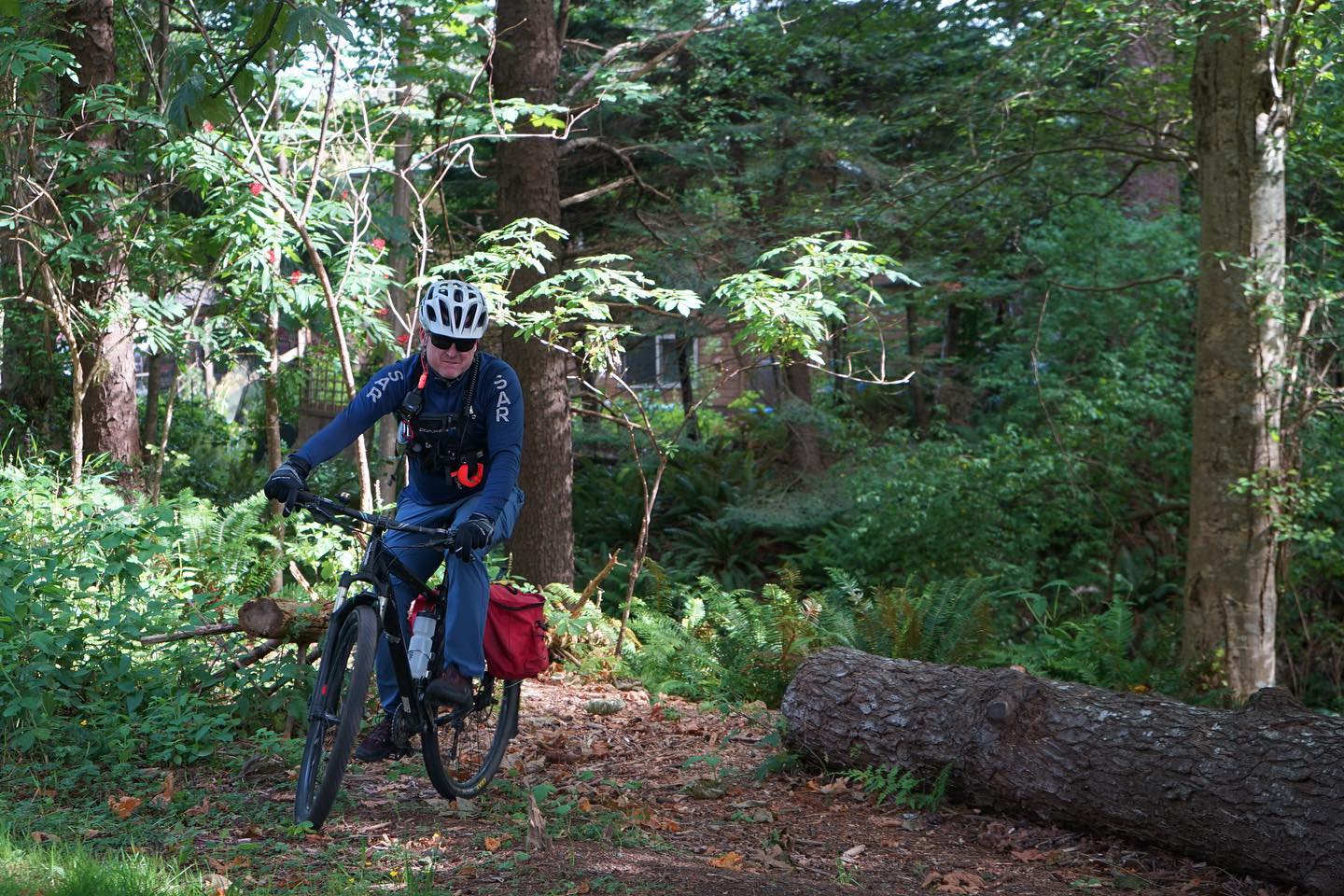
Bicycle Team
At CRSAR we have specialty teams that are trained for specific jobs. One of the newer additions has been our bike team. They help us cover a lot of ground, and can sometimes reach people faster in certain terrain. Bikes are also quieter than quads, so it can allow the team to use certain sound techniques to assist in the search. We look forward to growing this team and providing yet another tool to help our community.
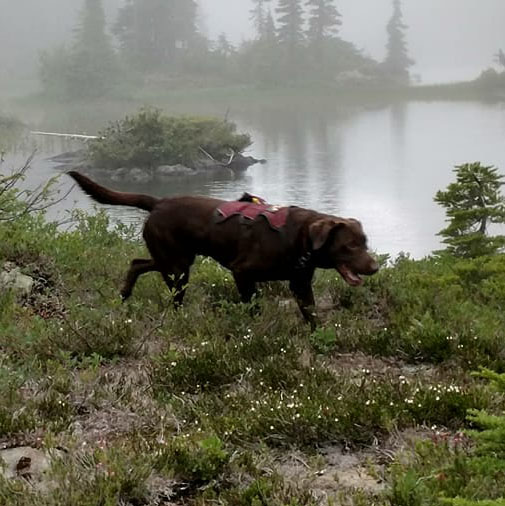
Canine
CRSAR currently has one EMCR recognized SAR Dog Team, with several more in training. The use and success of using dog teams on searches are becoming recognized universally.
In order to qualify as a team in B.C., a number of requirements must first be met:
- Potential handlers must be registered with Emergency Management and Climate Readiness (EMCR) as an
active member of a local Ground Search and Rescue (SAR) Group and have been GSAR certified for a
minimum of 2 years. - All handlers must hold a valid First Aid Certificate and must be in good physical condition, be competent in wilderness environments, extremely competent with navigation and communications, and have a genuine interest in dogs and the SAR Dog program. The upcoming RCMP national standard for validation may include other requirements as well.
- The dog must be under 2 years of age and must pass an assessment to determine if it has the drive and physical capability to be a working search dog. This is done through the BC Search Dog Association at
one of their semi-annual provincial training camps.
The process of training a dog to the validation standard is time-consuming and can take up to 2 years from the time of passing puppy assessment. At the completion of training, an evaluator, as designated by the RCMP Pacific Region Dog Service Supervisor will carry out the evaluation, which is made up of a mock search scenario and an obedience test. Dog Teams must re-validate on an annual basis.
When the EMCR SAR Dog Team has been successfully certified, it may then be called upon by either the RCMP or EMCR to work on a search under the direction of the RCMP Dog Team assigned to that search. CRSAR deploys K9 teams on a variety of SAR calls from missing persons to evidence searches, and our dog team also assists other SAR teams on Vancouver Island and beyond with mutual aid on searches.
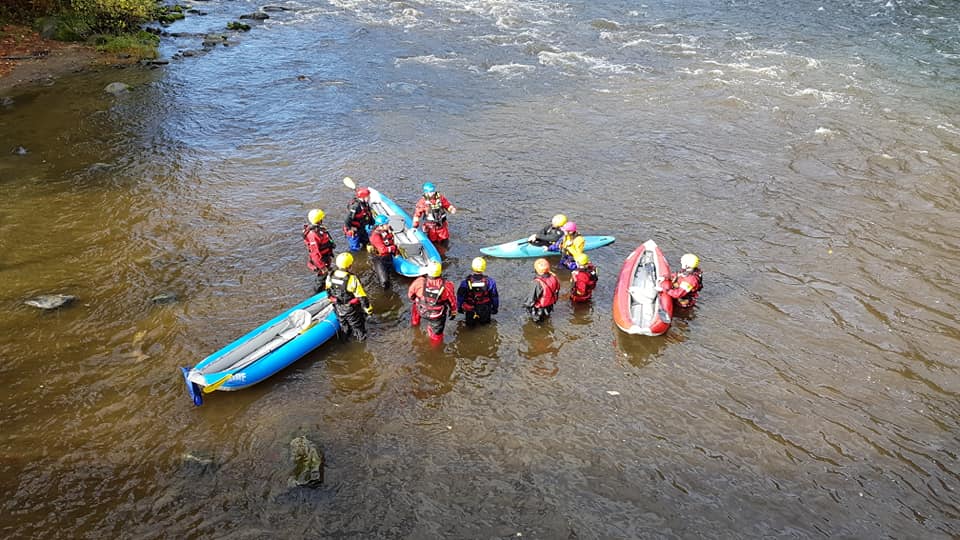
Water Rescue
CRSAR has a team of members trained to perform water and swift water/flood rescues.
Swift water rescue takes specialized training and equipment and regular practice in our local waters to remain familiar with the water systems and the ever changing list of hazards that can be found on a river.
We maintain a team of highly skilled water rescue technicians that work together as a team to deploy and affect a rescue on any water way on the North Island.
Rescuers wear a dry suit, gloves, helmet, PFD, and footwear designed for a swift water environment. Inflatable kayaks are used to travel downstream or cross a river and can be deflated and rolled up if they are being transported by helicopter for remote area access.
Specialized rope rescue equipment is used to facilitate river crossings and subject recovery. Ropes are designed to float and are narrower to reduce resistance when in the water. Connectors and other devices are made of aluminum to keep weight down and make transport and swimming easier.
While a frozen lake or pond is not commonly found in our area, the farther from the ocean and the higher into the mountains you climb, the more likely ice will be found. Due to our short and mild winter season, the ice that forms is rarely of suitable thickness to conduct any sort of activities.

Tracking
Over the years tracking has been shown to be a very effective technique in locating lost persons. Tracking (sign cutting) is the step by step following of a person. It takes training, determination and hundreds of hours of practice to become a skilled tracker.
Campbell RIver Search and Rescue is currently developing their tracking team, with a number of our members attending regular training courses to develop their skills.
By analysing the footprints and other sign left behind, trained trackers can determine a direction of travel and even follow the track of an individual across varied terrain.

Avalanche Rescue
The mountains of Vancouver Island and the Coast Range in winter are of course subject to avalanches. With the assistance of a professional avalanche forecaster, CRSAR members are expected to be able to respond in the event that an avalanche buries someone and immediate help on site has not been successful in finding the victim.
Twenty-six CRSAR members have been certified by the Justice Institute of B.C. as “Organized Avalanche Rescue Team Members”, and we have 3 members certified as Team Leaders. Organized Avalanche Rescue Team Members (OARTM) learn to recognize potential avalanche terrain, to analyze snow and weather conditions in order to understand the likelihood of an avalanche, and to use rescue tools effectively. Organized Avalanche Rescue Team Leaders (OARTL) are trained to a higher level in these same areas, and are tasked with leading rescue teams in avalanche terrain.

Helicopter Rescue
Campbell River SAR uses helicopters to decrease response times, access difficult terrain and transport personnel or equipment. Helicopters are typically used in one of three ways:
Personnel and Equipment Transport
When distances to subjects are significant, a helicopter will be used to transport personnel and equipment to the area in order to speed up the subject’s rescue. All members of CRSAR have taken a basic helicopter safety orientation with our air carriers to ensure their safety while in and around a helicopter.
Hover Entry and Exit / Toe In
Often, when a large area needs to be searched to locate lost or injured subjects, a helicopter will transport teams of 2-3 SAR members into various areas to cover as much terrain as quickly as possible on foot. The terrain does not always permit a helicopter to land. In these situations, the helicopter will hover a few feet above the ground while a SAR member steps out onto the helicopter skid and climbs down onto the ground. Another option that may be possible is to place the front of one skid onto an object such as a rocky outcropping or stump and have the SAR members slide their feet along the skid and step onto the object. They can then move to a safe position away from the helicopter and permit additional SAR members to exit the aircraft.
Class D Fixed Line
This specialized rescue team uses long line flight equipment and techniques to affect rescues in remote and difficult situations. CRSAR currently employs 2 Class D techniques: Fixed Line, and Hoist. Hoisting requires a medium duty helicopter (typically a Bell 212) equipped with a hoist (specialized winch) and a
dedicated hoist operator in addition to the pilot. This technique offers a considerable advantage over Fixed Line, in that our team is able to fly to the incident scene, perform a reconnaissance flight, hoist members down to the ground, rescue the subject, and hoist everyone back up into the machine without landing or shutting down. Injured subjects are able to reach higher medical care in less time.
This resource is not always available, so we often employ our Fixed Line resource, wherein a single rescuer or two can be suspended on a long line 100-200 feet below the helicopter in a special flight harness The pilot can then transport the rescuer into an area that makes landing or hover exits impossible (trees, steep mountain sides, etc.). The subject is placed in a stretcher or harness and attached to the rope along with the rescuer. The helicopter then lifts the attached rescuer and subject and transports them to a suitable location where the helicopter can land, and safe entry into the helicopter can be made. Rescues that previously may have taken several hours can now be carried out very quickly.
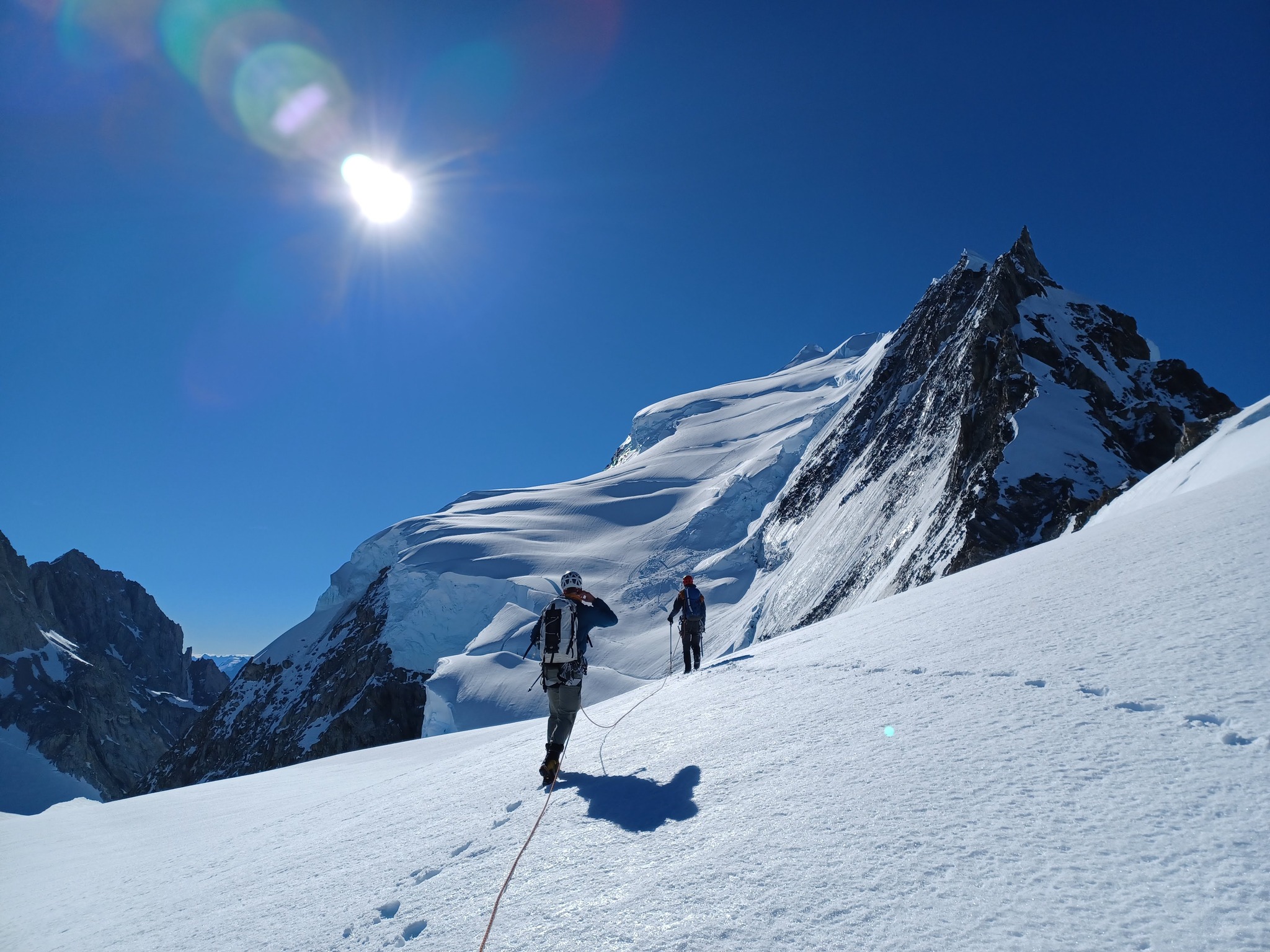
Mountain Rescue
Search and Rescue above treeline requires its own set of skills. CRSAR’s Mountain Rescue Team meets the need with a team of specialists trained in rock climbing, glacier travel and rescue, route finding and alpine anchor and travel systems. These members must be working towards their certification in Rope Rescue and Organized Avalanche Rescue. Training takes place in the summer under the direction of a certified guide from the ACMG (Association of Canadian Mountain Guides), and is supplemented by year-round in-house refresher sessions.
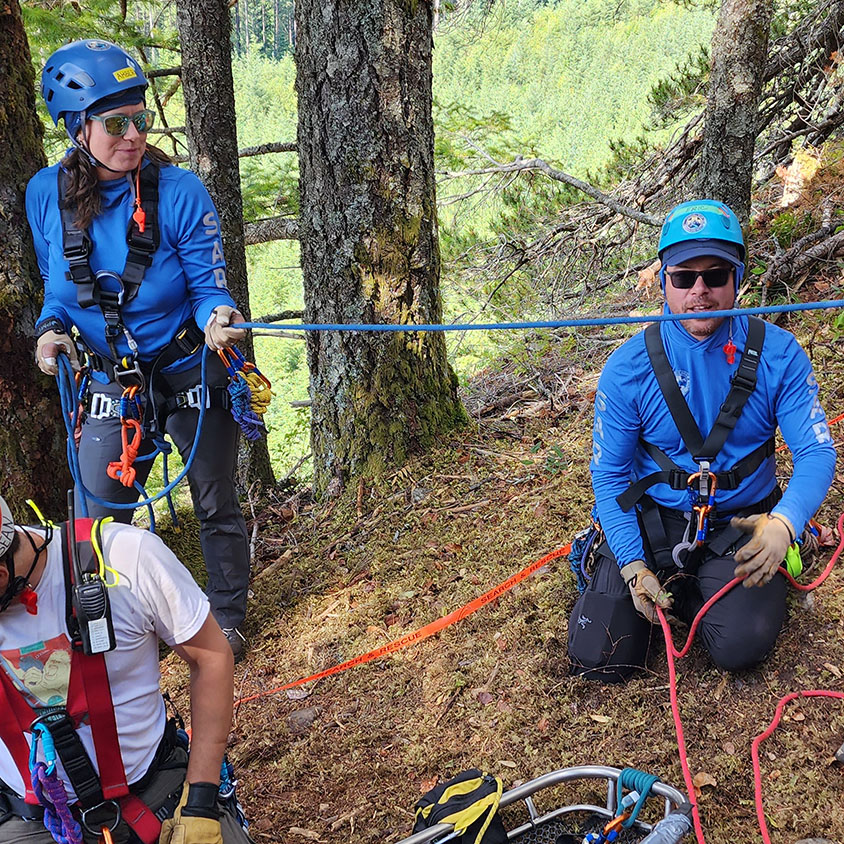
Rope Rescue
CRSAR has a dedicated group of members that have pursued specialized training in rope rescue techniques. In addition to the regular training that all CRSAR members participate in, rope rescue team members are required to spend additional time training for rope rescues. A minimum training requirement must be maintained to hold a valid certification. Being a rope rescue team member is a serious commitment.
All rope rescue team members attend an extensive multi-day Justice Institute of BC training course followed by 6 months of practice. If sufficient time has been spent practicing, they can apply for an examination. If they successfully complete the examination (20+ hours over 3 days), they are certified as rope rescue team members (RRTM).
RRTMs are trained in slope rescues, high angle rescues, stretcher rigging, subject packaging, and a multitude of command and safety protocols. They may be asked to rappel down a cliff, ascend back up, cross a high line, control a stretcher as they are lowered over an edge, haul a subject and rescuer back to the top of a bluff using a simple pulley system and some muscle, operate a brake rack, rig a pre-tensioned back-tie, extend an anchor, the list goes on and on.
RRTMs are under the direction of a Rope Rescue Team Leader (RRTL). RRTLs have typically been RRTMs for several years. They have attended an additional multi-day training course, practiced extensively, and have been examined over multiple days before being certified as a leader.
CRSAR uses equipment that is designed for rope rescues and is independently certified to ensure safety. We have a variety of specialized rope rescue equipment and constantly train to keep up with the latest standards and technology.
In any rescue, the safety of subjects, bystanders, and rescuers is of the utmost priority.
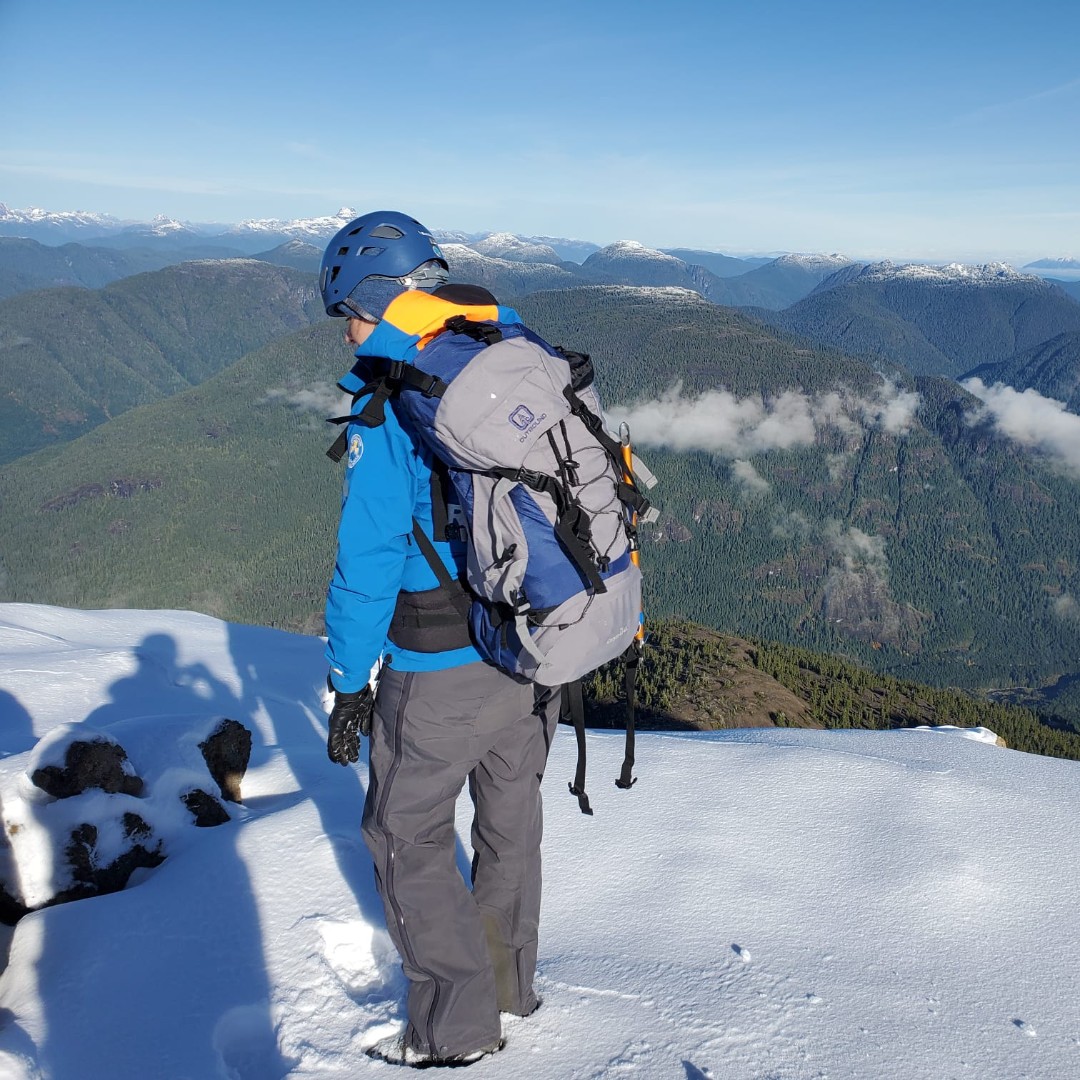
How do I learn all this cool stuff?!
Once you’ve finished our basic Ground Search and Rescue (GSAR) training, you’ll have opportunities to attend practices or training in a variety of topics including those listed above. Dedication to any of the skills takes a great deal of time and energy, and it is not expected that everyone will do all of them!
